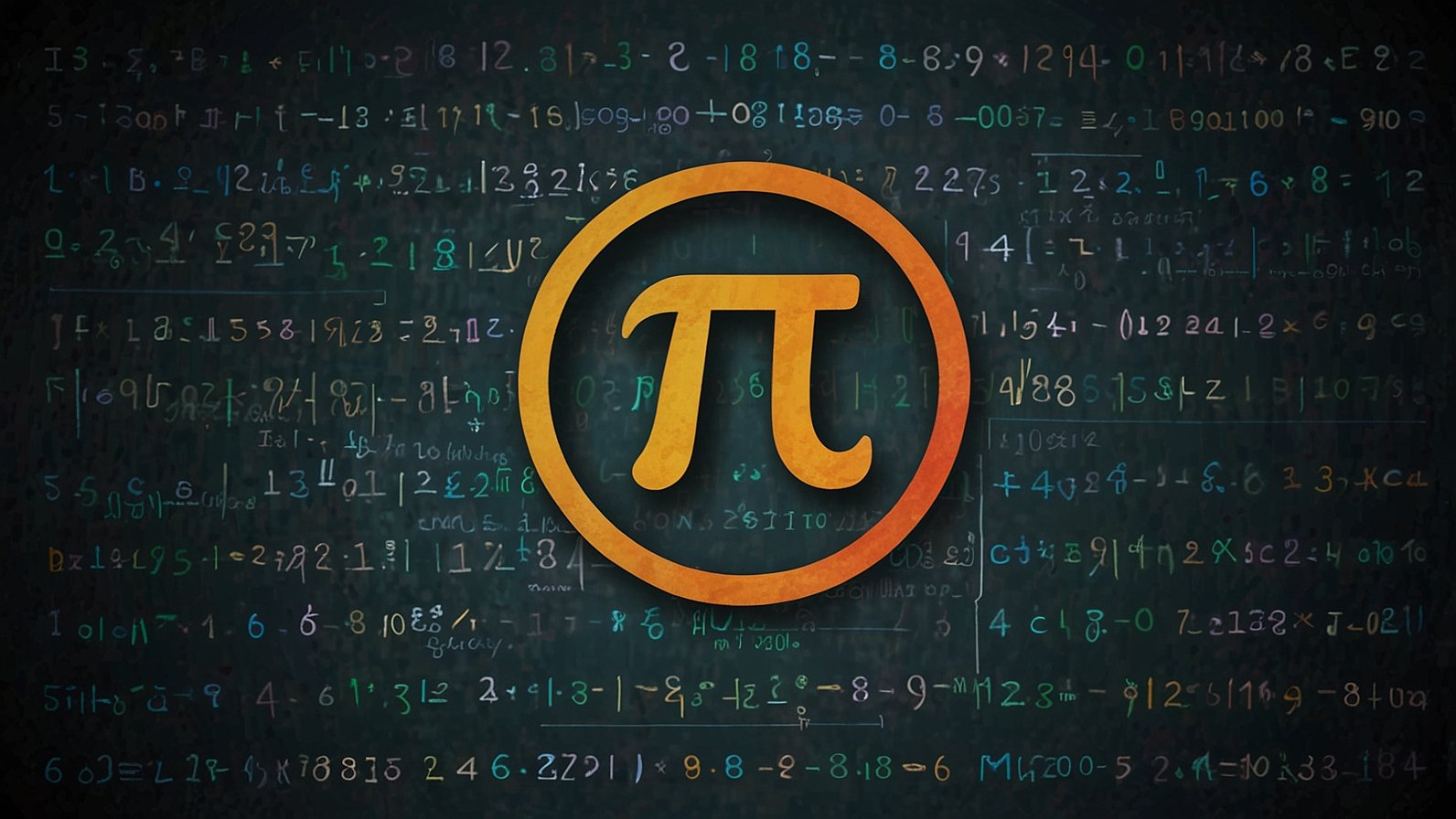Imagine needing the ten-thousandth digit of Pi for a complex engineering model, or wanting to visualize the first million digits as a swirling, colorful piece of art. Just a decade ago, this would have required supercomputing power. Today, it’s as simple as opening a browser tab. This is the power and promise of Pi123, a cloud-based computational platform that turns the mystical number Pi from a mathematical concept into a dynamic, interactive tool. Let’s explore.
Why Pi123 is More Than Just a Number Cruncher
For centuries, Pi (π) has captivated mathematicians, scientists, and artists alike. It’s the constant that defines circles, from the subatomic to the cosmic scale. But for students, engineers, and data enthusiasts, working with Pi has always had a practical limitation: precision. Standard calculators give you a handful of digits, which is fine for building a birdhouse but disastrous for building a satellite.
Pi123 shatters that limitation. Think of it as a specialized workshop in the cloud, entirely dedicated to high-precision calculations and straightforward data tasks. It’s not trying to be a full-blown programming IDE or a complex statistical suite; instead, it focuses on doing a few things exceptionally well, making it accessible to everyone from a curious 8th grader to a physicist running quick checks.
Unpacking the Core Features of Pi123
So, what exactly can you do once you log in? The platform is built on three foundational pillars that serve distinct but often overlapping needs.
1. High-Precision Pi Calculations
This is the heart of Pi123. The platform grants you instant access to Pi calculated to an astonishing number of decimal places.
- Massive Digit Access: Need Pi to 100,000 digits? A million? Pi123 delivers them instantly, eliminating the need to run resource-heavy algorithms on your local machine.
- Digit Search Functionality: Ever wonder where your birthday sequence first appears in Pi? The platform includes a powerful search tool that lets you find any number sequence within the vast expanse of Pi’s digits.
- Educational Visualizations: To help understand the randomness and distribution of Pi, Pi123 can generate simple infographics, like bar charts showing the frequency of digits 0-9 in any given segment.
2. Simple Real-Time Data Processing
While Pi is its star, Pi123 is also a capable light-duty data engine. It can handle streaming or batch data for simple transformations.
- Live Data Integration: You can connect a public API (like a weather feed or stock ticker) and use Pi123 to perform running calculations, such as a 10-minute average temperature or a simple moving average for a stock.
- Formula Application: Apply custom formulas to CSV data uploads. For example, a teacher could upload student test scores and instantly calculate averages, standard deviations, and curves.
3. A Learning-Centric Environment
The interface is deliberately clean and well-documented. Every tool comes with clear examples and suggested projects, lowering the barrier to entry for computational thinking.
Who Actually Uses Pi123? Real-World Case Studies
You might be thinking, “This sounds neat, but is it practical?” Absolutely. Let’s look at some real-world users.
- Maria, a High School STEM Teacher: Maria uses Pi123 to bring math to life. Her students don’t just memorize Pi; they use the platform to run probability experiments on its digits and create “Pi Art” by assigning colors to different numerals. The real-time processing feature allows her class to analyze live weather data to model how temperature affects air pressure, turning abstract equations into tangible lessons.
- Ben, a Freelance Robotics Engineer: Ben designs robotic arms that require precise circular movements. He uses Pi123 to quickly generate Pi values with the exact precision needed for his motor control algorithms. Before discovering the platform, he would manually copy values from online sources, risking typos. Now, he gets certified-accurate digits directly into his code, saving time and reducing error.
- The “Pi-Day Planning Committee,” a Community Group: This group used Pi123 to find the sequence “314159” deep within Pi’s digits. They then used that position (e.g., “starting at the 1,000,001st digit”) as part of a city-wide scavenger hunt, beautifully blending mathematics with community engagement.
Getting Started with Pi123: Your First 10 Minutes
Convinced to give it a try? The onboarding process is straightforward. Here’s a quick guide to your first project: visualizing Pi digit frequency.
- Create Your Account: Head to the Pi123 website and sign up. A free tier is available with generous access limits.
- Navigate to the Pi Explorer: On your dashboard, find and click the “Pi Explorer” tool.
- Set Your Parameters: Enter
1as your starting digit and1000as your ending digit. Click “Generate.” - Access the Visualization Tool: Once the digits are displayed, look for the “Analyze” or “Visualize” button.
- Generate Your Chart: Select “Digit Frequency Chart” from the menu. In seconds, you’ll see a graph similar to the one described earlier.
- Export and Share: You can download the chart as a PNG image to use in a report or presentation.
Pi123 vs. The Competition: Where It Fits
It’s helpful to understand how Pi123 compares to other tools.
| Tool | Primary Use Case | Best For |
|---|---|---|
| Pi123 | High-precision π & simple data tasks | Learners, educators, & pros needing quick, precise π |
| Wolfram Alpha | Broad computational knowledge engine | Complex math, science, and fact-based queries |
| Google Sheets | General-purpose spreadsheet analysis | Collaboration, business data, and complex formatting |
| Python (NumPy) | Full-scale programming and data science | Developers building custom applications and models |
As you can see, Pi123 doesn’t replace these powerful tools; instead, it complements them by offering a frictionless, specialized environment for its specific niche.
Conclusion: Unleashing Creativity with Precision
Pi123 demonstrates that powerful tools don’t have to be intimidating. By demystifying the complex and making high-precision computation accessible, it opens doors for education, innovation, and pure curiosity. It’s more than a calculator; it’s a digital companion for anyone whose work or passion intersects with the timeless magic of Pi.
Your Next Steps:
- Try the Free Tier: Visit Pi123 and run a simple digit search for a number sequence that’s meaningful to you.
- Think of a Mini-Project: Could you analyze the weather data from your last vacation? Or calculate the area of a complex circular design?
- Share Your Creation: The platform has a community gallery. See what others have built and share your own visualizations.
What’s the first calculation you’ll run on Pi123?
You May Also Read: The Blooket Host: Your Secret Weapon for Unlocking Explosive Classroom Engagement
FAQs
Is Pi123 really free to use?
Yes, Pi123 offers a robust free tier suitable for most students and casual users. For heavy, commercial-grade usage requiring API access and higher computational limits, paid professional plans are available.
How many digits of Pi does Pi123 have access to?
The platform currently provides access to over 10 trillion digits of Pi, with its search and calculation tools optimized for the first several billion.
Can I use Pi123 for serious scientific or engineering work?
While it is a powerful tool, it’s designed for light professional use and verification. For mission-critical systems in fields like aerospace or finance, the results from Pi123 should be validated against industry-standard certified software.
What kind of data sources can I connect for real-time processing?
You can connect to any publicly accessible API that returns JSON or CSV data. Common examples include financial market data, weather station feeds, and public sensor data.
Do I need to know how to code to use Pi123?
Not at all! The core features are designed to be point-and-click. However, for advanced custom formulas in the data processing module, a basic understanding of mathematical expressions is helpful.
How does Pi123 ensure the accuracy of its Pi calculations?
The platform uses several verified algorithms (like the Chudnovsky algorithm) to compute Pi, and the results are cross-checked against known values and sequences to ensure absolute accuracy.
Can I export my results?
Absolutely. You can export calculated digits as text files, and charts or processed data as CSV, PNG, or PDF files.










